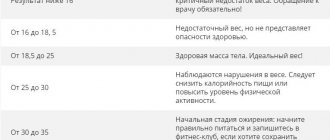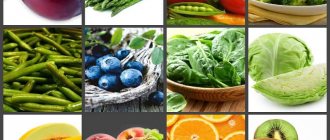Content:
- 1 Requirements of the pear diet
- 2 Pear diet menu
- 3 Example of a pear mono-diet
- 4 Example of a pear-kefir diet
- 5 Example of a combined pear diet
- 6 Example of a pear-apple diet
- 7 Example of a pear-orange diet
- 8 Example of a pear-honey diet for 3 days
- 9 Example of a pear-milk diet
- 10 Example of a cabbage-pear diet
- 11 Contraindications to the pear diet
- 12 Advantages of the pear diet
- 13 Disadvantages of the pear diet
Lose weight up to 3 kg in 3 days.
The average daily calorie content is 520 Kcal. Juicy, tasty pears not only help improve metabolism, but also have disinfectant, antipyretic, diuretic, sedative and other medicinal properties. The pear diet is a great way to lose weight with health benefits.
Reviews and results
- Karina, 19 years old: “... When the pear ripened in our yard, I decided to try the diet for a week. Of course, the almost identical daily menu was confusing, but I really didn’t feel hungry, in the end I lost 2.5 kg, I think that with my current 54 kg, this is a good result.”
- Yulia, 27 years old: “... I believe that the pear diet is not for the weak, there are too many prohibitions, but it was it that helped me get back into shape after my second birth. Now every year I try to rely on this product, because after pears I don’t feel like eating at all.”
- Svetlana, 32 years old: “...I have just a wonderful result - minus 2 kg in 3 days, I’m thinking of repeating it in a month, because I feel great.”
- Yasya, 25 years old: “... The diet was very difficult for me, although I love pears, but the dinner was too modest, I could barely stand it. I lost 6 kg, I’m glad it’s all behind me.”
↑ Requirements of the pear diet
If you want to lose extra pounds as quickly as possible and can boast of willpower, a three-day mono-diet on pears
.
During the day, you need to consume 7-8 medium-sized pears in 5-6 doses. If it will be very difficult for you to eat only pears, you can add whole grain bread to the menu, but no more than 2 pieces per day. Usually a day of pear mono-diet takes away a kilogram of excess weight. Advice: do not peel the pear; it contains useful fiber that helps us lose weight. The peel is not digested in the stomach, but cleanses the intestines. You can lose as much as 5-7 kg with the pear-kefir diet
, which can be followed for a maximum of 5 days.
Per day you are allowed to consume 800 g of pears, 1 liter of low-fat kefir, 500 g of any other fruits or berries (with the exception of grapes and bananas). The combined pear diet
allows you to lose 5 kg in a week.
Here you need to eat 4 times a day, supplementing the pear diet with rice, chicken fillet, low-fat yogurt and black bread. Portions should be small, and pears should be given first place on the menu. Options for pear diets that include other fruits are popular. So, on a pear-apple diet
, which lasts 3 days, you can lose up to 4 extra pounds.
The daily ration of this diet is 0.5 kg of pears and apples. Orange lovers can go on a pear-orange diet
.
It allows you to eat 0.5 kg of pears and oranges for five days, and you can also include up to 300 g of apples or grapefruits in your daily menu. Fruit salads can sometimes be topped with low-fat yogurt. You can follow the rules of the pear-honey diet
. However, its name does not reflect the whole essence of the technique. In this case, for every afternoon snack and dinner you need to eat a pear baked with honey, and for other meals you can eat any food from the list below: - low-fat cheese; — bread (preferably rye or whole grain); - lean meat, fish, seafood; - cereals; - chicken eggs; - non-starchy fruits and vegetables; - green tea without sugar.
When creating a menu, you need to observe moderation; ideally, the diet should not exceed 1300 energy units per day. It is advisable to avoid salt on the pear-honey diet. The pear-milk diet has similar rules.
.
According to them, during a ten-day diet course, dinner should consist of a glass of skim or low-fat milk. The rest of the meal can be made, in addition to pears, from berries, low-fat cottage cheese, natural yogurt, salad from non-starchy vegetables, oatmeal soup. The recipe for making the soup is as follows. Prepare broth from lean meat, add chopped potatoes, carrots and onions to it. After 10 minutes, add the oatmeal, add a little salt (if you want) and cook until tender. The pear and cabbage diet
prescribes eating 700 g of pears and 0.5 kg of cabbage (fresh or pickled) for 5 days. You can add a little carrot to the cabbage. Meals are five times a day. Weight loss - up to 5 kg.
A low-oxalate diet may prevent the development of kidney stones
Kidney stones are a fairly common urological disease. Kidney stones usually form from minerals found in the urine. Most stones are so small that they leave the urinary tract on their own and painlessly. However, large stones can cause severe pain or block urine flow. This condition is very painful and requires treatment.
In the United States, 1 million people develop kidney stones every year. Stones usually appear between the ages of 20 and 40, with men getting sick more often. You may also be at risk for developing kidney stones if you have a family history of kidney stones. Some people's stones are composed of calcium oxalate; eating a diet low in oxalates and salt can help prevent the development of kidney stones. On a low-oxalate diet, you should limit your oxalate intake to 40-50 mg daily.
Oxalates are found in many foods. These tables will help you stick to a low-oxalate diet, which can help prevent stone formation. Pay attention to your drinking regime. You should drink at least 2.5 liters of fluid per day. Your body can convert vitamin C into oxalates, so avoid high doses of vitamin C (more than 2,000 mg/day). The unit of calculation for foods in the tables below is 1 serving (100g). Avoid these foods that are high in oxalate.
Products containing more than 10 mg of oxalate per 100 mg.
Beverages
| Dairy
|
Nuts, seeds
| MeatNo |
Cereals
| Fruits
|
Vegetables
| Vegetables (continued)
|
Seasonings
|
Limit foods containing moderate oxalates
You can consume no more than 2-3 servings of these products per day. Medium oxalate foods include 2-10 mg oxalate per day
Beverages |
|
Dairy |
|
Nuts, seeds |
|
Fruits |
|
Meat, offal |
|
Cereals |
|
Vegetables |
|
Eat low oxalate foods
Eat these foods as much as you like; they contain less than 2 mg of oxalate per serving.
Beverages |
|
Dairy |
|
Nuts, seeds, oil |
|
Fruits |
|
Meat |
|
Cereals |
|
Vegetables |
|
Seasonings |
|
Other products |
|
↑ Example of a pear-honey diet for 3 days
Day 1
Breakfast: bread with a slice of cheese; green tea with lemon; apple. Snack: orange or grapefruit. Lunch: 150 g of baked fish fillet and tea. Afternoon snack: pear baked with honey. Dinner: pear baked with honey.
Day 2
Breakfast: oatmeal with apricot and apple; Tea with lemon. Snack: a couple of whole grain breads with cheese and a cup of green tea. Lunch: an omelette of two chicken eggs and a tomato, cooked in a frying pan without adding oil; half a pear. Afternoon snack: pear baked with honey. Dinner: pear baked with honey.
Day 3
Breakfast: 100 g of low-fat cottage cheese with the addition of pear and apple slices; green tea. Snack: boiled chicken egg and fresh tomato; tea with lemon. Lunch: 3-4 tbsp. l. buckwheat porridge; slice of baked chicken fillet; cucumber and white cabbage salad; a glass of kefir. Afternoon snack: pear baked with honey. Dinner: pear baked with honey.
↑ Contraindications for the pear diet
- Women should not adhere to the pear diet during pregnancy and breastfeeding, children, adolescents, the elderly, during periods of exacerbation of chronic diseases and in the presence of any serious illnesses.
- Since most options for losing weight with pears involve serious cuts in the diet, consulting a doctor before starting a diet will not be superfluous.
- It is not advisable to consume pears for people who often suffer from constipation or have diseases of the gastrointestinal tract (ulcers, colitis, gastritis, etc.).
- Tart and sour pears are contraindicated for problems with the nervous system.
Advantages and disadvantages of the pear diet
The advantages of the pear diet are as follows::
- obtaining vitamins and other elements for the normal functioning of the body;
- the diet on pears is easily tolerated;
- product availability;
- the ability to lose up to 7 kg in a week.
The disadvantages are as follows:
- presence of contraindications;
- you will have to spend time planning your diet and preparing meals;
- The diet will not appeal to those who do not like pears.
↑ Advantages of the pear diet
- Thanks to the fruit favorite of the diets described above, you can significantly modernize your figure in a short period of time.
- The abundance of options for pear weight loss allows you to choose the one that suits your goals and capabilities.
- Homer sang pears in the Odyssey, and the depicted gods of Ancient Rome and Egypt held a pear in their hands. There are many types of pears, differing in taste, color, and size. Only the beneficial composition of these fruits remains unchanged.
- The ideal combination of vitamins A, B, PP, E, K, H, calcium, magnesium, sulfur, zinc, cobalt, vanadium, sodium, chlorine, phosphorus, rubidium and many other components in pears has a positive effect on the kidneys, pancreas, functioning of the nervous system, intracellular metabolic processes, cholesterol levels. There is also a lot of room in pears for essential oils, which give us strength, invigorate, lift our spirits and protect us from stress. Eating pears helps to quickly cure colds and counteract viral processes.
- Regular introduction of pears into the diet will help increase the body's defenses, improve the functioning of the cardiovascular and endocrine systems, stabilize the activity of the stomach and intestines, and cleanse the body of harmful metals, wastes and toxins.
- Eating pears has a beneficial effect on our appearance. Extracts from these fruits give elasticity to the skin, have a lifting effect, and prevent inflammatory processes. It’s not for nothing that pear components are included in many creams, lotions and other cosmetics. By the way, you can not only eat pears, but also make yourself masks from them.










